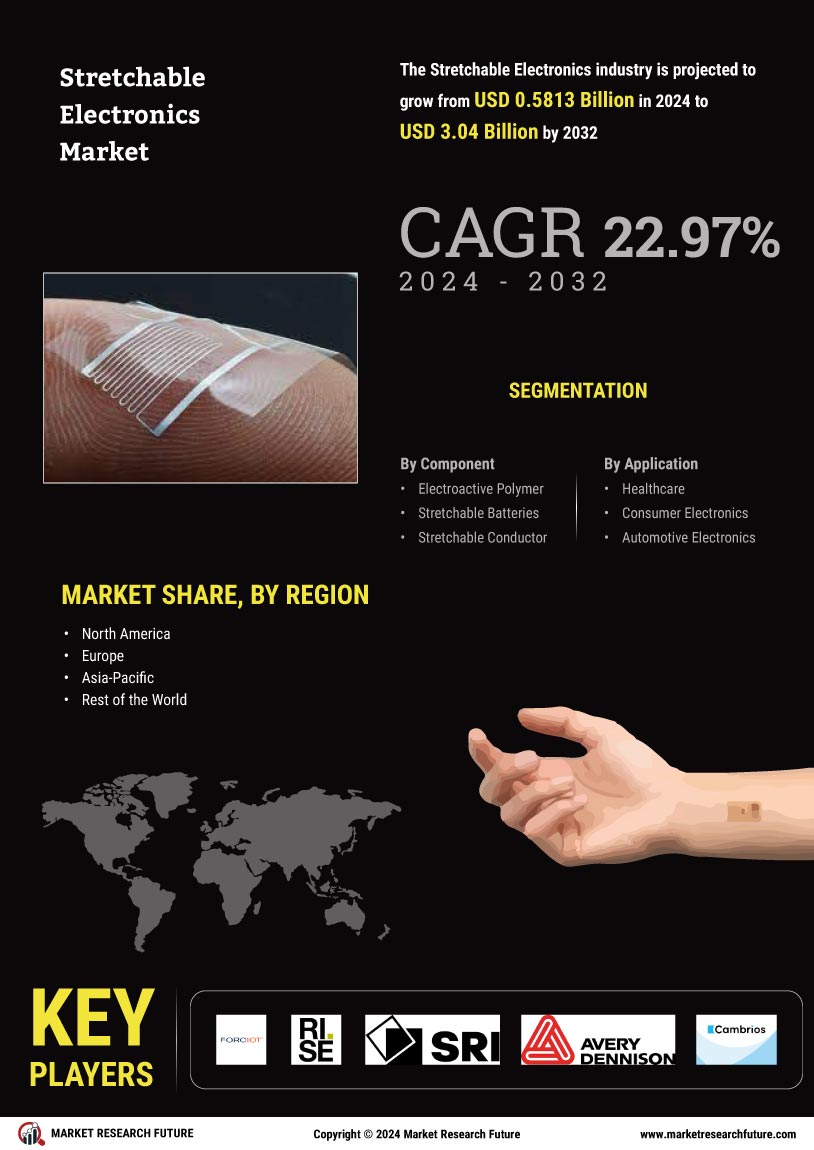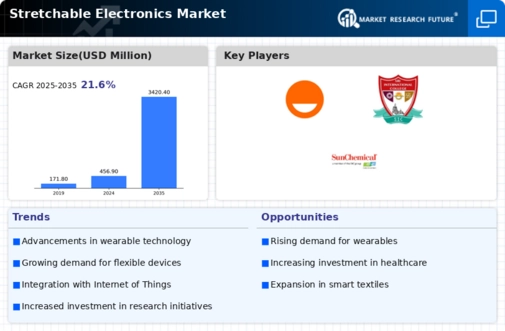Increased Focus on Smart Textiles
The integration of stretchable electronics into smart textiles is emerging as a key driver for the Stretchable Electronics Market. As the demand for intelligent clothing rises, manufacturers are exploring ways to embed sensors and electronic components into fabrics. This trend is particularly evident in sportswear and fashion, where stretchable electronics can monitor performance metrics and enhance user experience. The smart textiles market is projected to grow significantly, with estimates suggesting it could reach 5 billion USD by 2026. This growth is likely to stimulate innovation in materials and design, as companies seek to create multifunctional textiles that combine comfort with advanced technology. The intersection of fashion and technology presents unique opportunities for the stretchable electronics market, potentially attracting a diverse consumer base.
Growing Applications in Healthcare
The healthcare sector is increasingly adopting stretchable electronics, which serves as a significant driver for the Stretchable Electronics Market. Applications such as wearable health monitors, smart bandages, and electronic skin are gaining traction due to their ability to provide real-time health data and improve patient outcomes. The global market for wearable medical devices is anticipated to reach around 30 billion USD by 2025, highlighting the potential for growth in this area. Stretchable electronics facilitate the development of devices that can conform to the human body, thus enhancing comfort and usability. This trend is likely to encourage further research and development in biocompatible materials and flexible sensors, ultimately expanding the range of applications within the healthcare domain.
Rising Demand for Wearable Technology
The increasing consumer interest in wearable technology is a primary driver for the Stretchable Electronics Market. As health and fitness tracking becomes more prevalent, devices such as smartwatches and fitness bands are incorporating stretchable electronics to enhance user comfort and functionality. The market for wearable devices is projected to reach approximately 100 billion USD by 2026, indicating a robust growth trajectory. This demand necessitates the development of flexible and stretchable materials that can conform to the human body, thereby driving innovation within the stretchable electronics sector. Furthermore, the integration of advanced sensors and communication technologies into these wearables is likely to propel the market forward, as manufacturers seek to create more sophisticated and user-friendly products.
Emerging Trends in Consumer Electronics
The consumer electronics sector is witnessing a shift towards more flexible and innovative products, which is driving the Stretchable Electronics Market. As devices become thinner and more portable, the need for stretchable components that can withstand bending and stretching is becoming increasingly apparent. Products such as smartphones, tablets, and laptops are incorporating flexible displays and touch sensors, enhancing user interaction and experience. The consumer electronics market is expected to grow at a compound annual growth rate of around 6% over the next few years, indicating a robust demand for stretchable electronics. This trend is likely to encourage manufacturers to invest in research and development, leading to the creation of new applications and products that leverage the unique properties of stretchable materials.
Advancements in Flexible Manufacturing Techniques
Innovations in manufacturing processes are significantly influencing the Stretchable Electronics Market. Techniques such as roll-to-roll printing and 3D printing are enabling the production of stretchable electronic components at a lower cost and with greater efficiency. These advancements allow for the mass production of flexible circuits and sensors, which are essential for various applications, including healthcare and consumer electronics. The ability to produce high-quality stretchable electronics at scale is expected to enhance market accessibility and affordability. As a result, manufacturers are likely to invest in these technologies, further driving the growth of the stretchable electronics market. The potential for customization and rapid prototyping also presents opportunities for new entrants in the industry, fostering a competitive landscape.

















Leave a Comment